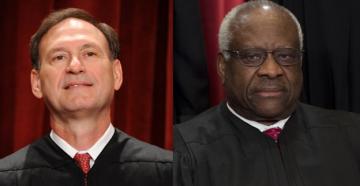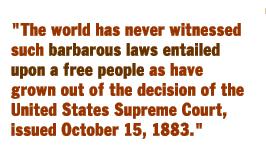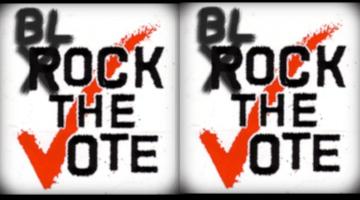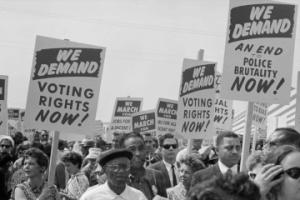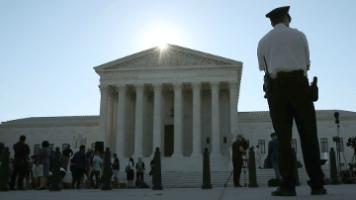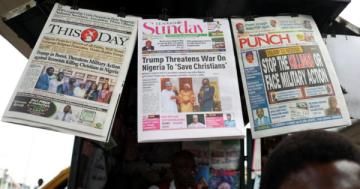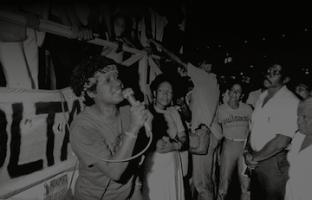“The Help America Vote Act blew open a giant loophole in the National Voter Registration Act’s protections.”
The recent Supreme Court decision blessing Ohio’s removal of half a million voters was ultimately decided on the issue of a postcard.
Now that little postcard threatens the voting rights of millions—but it can be reversed.
The instant-news media, working from press releases, not the Supreme Court’s decision itself, said that Husted, Ohio Secretary of State v. A. Philip Randolph Institute was about whether Ohio has the right to remove voters who failed to cast ballots in two federal election cycles.
Nope.
Even the Court’s right-wing majority concedes that federal law strictly forbids removing voters because they skipped some elections. The National Voter Registration Act of 1993 states that a voter purge program “shall not result in the removal of the name of any person … by reason of the person’s failure to vote.”
But here’s the trick: In 2002, the George W. Bush administration ginned up the Help America Vote Act. When a Bush tells you he’s going to “help” you vote, look out. Yet, naïve Democrats passed the act into law. The Help America Vote Act is filled with buried land mines that are still exploding.
Monday’s decision is one of those land mines. The Help America Vote Act, the Court concluded, blew open a giant loophole in the National Voter Registration Act’s protections. The trick is that Ohio does not remove voters simply because they missed a few elections. According to the majority opinion written by Justice Samuel Alito:
“Ohio uses a registrant’s failure to vote [only] to identify that registrant as a person whose address has likely changed.”
The Court takes note that Ohio claims it had evidence that, in 2012, a whopping 1.5 million voters — an astronomical 20 percent of its total voter base — had moved their residence out of Ohio or moved from their county voting area. The 1.5 million voters were sent postcards asking them to confirm their mailing address.
“Federal law strictly forbids removing voters because they skipped some elections.”
It was a voter’s failure to return the postcard that cost them their right to vote. The Court majority said that the Help America Vote Act trumps the National Voter Registration Act, arguing that the act passed under George W. Bush “specifies that ‘nothing in [the National Voter Registration Act prohibition] may be construed to prohibit a State from using the procedures’ — [such as] sending a return card.”
The Justices ruled that a voter’s failure to return a postcard (which asks the voter to confirm their address) constitutes solid proof that the voter had left Ohio or moved to another voting district.
The plaintiffs, a coalition of voting rights groups, were gob-smacked. Plaintiffs argued that there are many reasons folks did not return the postcard, most likely that they threw it away as junk mail or never received it in the first place. But the Court majority found that, without specific evidence, the plaintiffs’ claim that voters just threw away the cards was speculative and “dubious.”
Jim Crow Is in the Cards
Writing for the four dissenters, Justice Sonia Sotomayor said the effect of the Court’s decision was to disproportionately wipe out the rights of “minority, low-income, disabled, homeless, and veteran voters.” Sotomayor went on to cite an investigation revealing that Ohio’s purge operation had knocked out the registrations of 10 percent of African American-majority neighborhoods in downtown Cincinnati compared to only 4 percent of voters in a nearby suburban, majority-white neighborhood.
But that’s the point, Madame Justice.
But how? The Jim Crow result is in the cards.
I first discovered “purge-by-postcard” in 2014 while investigating mass attacks on voter rolls by GOP officials in a dozen states for Al Jazeera. I turned to direct mail experts, including Michael Wychocki, a Chicago-based adviser on mailing for Amazon and other companies that live or die by mail.
He directed me to the US Census Bureau’s massive study of mail return rates. Dig this:
* While 90 percent of those 65 years of age and older return the Census form, only 55.4 percent of those 18 to 24 reply.
* Homeowners are 32 percent more likely than renters to return forms.
* Only 65 percent of Latino voters mailed back an initial Census form, as did 70 percent of Black voters—versus over 80 percent of “non-Hispanic whites.”
And crucially, according to the Census study, 12 percent of mailings simply go astray—especially, says Wychocki, in poor, urban communities, where the tenants hop between apartments in the same neighborhood. And let’s not even discuss students and the homeless.
Designed to Be Thrown Away?
And that’s the Census Bureau, which designs mailings to get the highest response possible. Not so for the purge-by-postcard programs used by Ohio Secretary of State Jon Husted.
I showed Ohio voting rights attorney Robert Fitrakis a postcard on which one’s voting rights hang, and he gave, word for word, the same response I got from another direct mail expert, Mark Swedlund (whose clientele include eBay and AT&T): “Looks like junk mail, you’d throw it in the garbage.”
Indeed, Wychocki inspected the cards, which are filled with blocks of small print with no images. He explained that the design violates every cardinal rule of direct mail solicitation. While Wychocki would not speculate on the designer’s motives, he said it looked as if the postcard was by someone who did not want the voter to respond.
“Looks like junk mail, you’d throw it in the garbage.”
And one such someone is Kris Kobach. According to documents obtained by the ACLU, Kobach provided Husted (and other GOP voting officials) a sample postcard to send to voters targeted for purge.
Why? There are two groups of voters in the 500,000 that Ohio purged based on “evidence” the voter has moved. Hundreds of thousands were purged who landed on the suspect list because they missed elections. Second, there were those who supposedly have registered in another state. Names of those identified as moving to another state were taken from the infamous Interstate Crosscheck list given Husted by Kobach, according to documents from Kobach’s office.
For example, in 2015, leading up to the presidential election, Kobach, secretary of state in Kansas, gave Husted the Crosscheck list of 423,484 names of Ohio citizens who supposedly had registered in another state, according to Kansas records obtained by an investigative team I was working with at Rolling Stone magazine. Kobach and Husted had originally sold the Crosscheck program to the public as a method of finding criminal “double voters” – those actually voting in two states.
But Kobach himself told me in 2016—when I confronted him at a GOP fundraiser in Wichita while working for Rolling Stone—that the primary use of his Crosscheck lists is to identify voters who have moved and registered in another state. Kobach’s office directs the national program to remove voters who fail to respond to a postcard, taking advantage of the nifty Help America Vote Act-shaped hole in the National Voter Registration Act.
That Kris Kobach led the way with the purge-by-postcard scheme is not surprising, given his long history of scams to disenfranchise voters of color, closely reported on by Truthout.
History of Vote Suppression
Which brings us to Sotomayor’s outrage that the majority “entirely ignores the history of voter suppression against which the [National Voter Registration Act] was enacted and upholds a program that appears to further the very disenfranchisement of minority and low-income voters that Congress set out to eradicate.”
We don’t need to look at all of US history. Husted’s own long record of purging, blocking and not counting voters of color is a history lesson in disenfranchisement all by itself.
In 2012 and 2016, I filmed the single early voting station in Dayton, Ohio, where Black voters lined up for five hours to vote. I also filmed the lines in a white Toledo suburb. Well, actually, there were no lines: white voters had a gigantic field of machines to choose from—plus cookies and coffee served.
The long lines for Black voters resulted from Husted’s order closing all but one single early voting station in each county. That meant one polling station for the 13,000 residents and cows in Vinton County and one polling station for 1.3 million residents of Franklin County (Columbus).
Ohio attorney Robert Fitrakis says, bluntly, that Husted is purging voters of color to “make Ohio winnable [for Republicans] in the only way he knows how — by stealing American citizens’ votes. And he’s counting on bigotry to get away with it.”
What Can Be Done?
The implications of the Supreme Court decision are unimaginably horrid, as states come up with spurious “evidence” that a voter has moved — “proven” by a failure to respond to a piece of junk mail.
The purge could be massive: A half-million in Ohio will undoubtedly lead to millions nationwide.
Normally, a Supreme Court verdict is the final word, the last rodeo.
But there is hope. On Wednesday, I spoke by phone with renowned class-action attorney Jeanne Mirer of New York. She explained that the civil rights groups lost on a matter of law: States may assume a voter has moved residence if they don’t return a postcard.
But what if the facts say otherwise?
Just the Facts, Ma’am
It’s really simple to find out if failure to return a postcard is evidence you’ve moved: ask the voter. Call them up, knock on their door: Mr. Webster, have you moved to Virginia?
If Mr. Webster and others say, “No, here I am, I haven’t moved” … well, then, the Court’s factual assumption goes poof! Because the National Voter Registration Act says that removal methods must be “reasonable.”
So, the way to challenge the Court’s decision is to prove that purge-by-postcard is unreasonable and bogus.
To get to these purged voters, we need their names. But Husted has steadfastly refused to give up his list of the damned. He knows that the release of the names of those purged will blow his case to smithereens.
So, this reporter is filing a demand on Husted for the list of the purged. And I thank Mirer’s firm for taking on this enormous task, because in all, we are filing in 25 states where mass purges are conducted.(And her firm is working pro bono.)
Husted has so far stonewalled our polite requests for the information, but this new demand comes with a 90-day notice of a lawsuit.
“The purge-by-postcard is unreasonable and bogus.”
And in Kansas, where these methods, postcards and Crosscheck lists are conceived, I am joined in my demand on Kris Kobach for his purge lists by the Kansas ACLU.
Strategically, we’re beginning by demanding that segment of the purge list that Kobach gave to Ohio and other states.
Through investigation, we have already obtained small parts of these purge lists — including the one targeting Donald Alexander Webster Sr., a 70-year-old Black voter in Dayton, Ohio. He is listed as allegedly moving from Ohio to Virginia because there’s a Virginia voter registered as Donald Eugene Webster Jr.
Webster has not moved from Ohio. I met with him in his Dayton home. And he swears he’s never been a “Eugene” or a “Junior.” He insists, “I vote every election and every primary, every one.”
Channeling Justice Sotomayor, he told me, “I remember the Civil Rights Act, I remember all of those things. Almost all gone.” He added, with a deep sadness in his voice, “Somebody dropped the ball. Maybe it was us, our age group, that we thought we didn’t have to fight anymore.”
Well, Mr. Webster, the fight is beginning. Again.
Investigative reporter Greg Palast is the author of The Best Democracy Money Can Buy, now a film, The Best Democracy Money Can Buy: The Case of the Stolen Election.
This article previously appered in Truthoutand Portside.
Copyright, Truthout.

